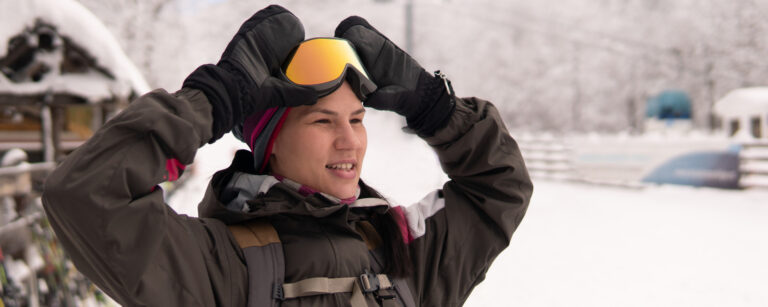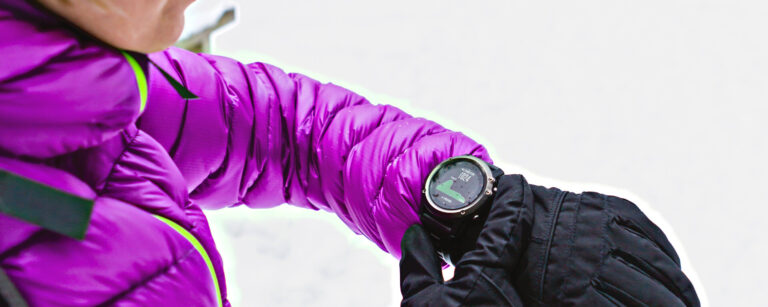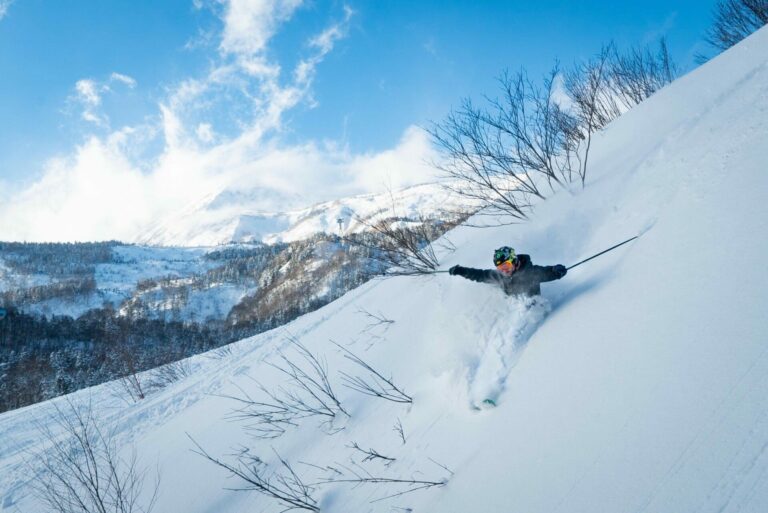Why You Need Ski Socks – 15 Compelling Reasons
Cold feet on the hill?

A good pair of ski socks might be the solution!
It sounds wild; what’s the difference?
I used to feel the same. I used to wear whatever socks I had, but when I moved to Japan and started skiing 100+ days a season, I realized their difference.
The best ski or snowboard socks can make all the difference between a good and bad day on the hill – not just warmer feet but greater comfort and control.
15 Reasons Why You Need Ski Socks
Ski socks are a vital part of a skier’s gear, providing several benefits that can enhance performance and comfort on the slopes. Here are some of the benefits of wearing ski socks:
- Protection
- Moisture-Wicking
- Compression
- Warmth
- Comfort
- Length
- Thickness
- Moisture-wicking
- Compression
- Seamless construction
- Breathability
- Strategic cushioning
- Arch and ankle support
- Reinforced areas
- Elasticized cuffs
1 – Protection

Many ski and snowboard socks have padded areas for protection – the front of the shin and the top of the foot.
Ski socks provide:
- Protection between the foot and the ski boot
- Reduce the risk of blisters
- Prevent chafing
2 – Moisture-Wicking
Ski socks are made from moisture-wicking materials to help keep your feet dry and warm on the slopes.
3 – Compression
Compression ski socks offer a tight, wrinkle-free, and secure fit that reduces skiing discomfort.
4 – Warmth
The combination of wool and synthetics in modern ski socks helps to keep your feet warm even in the coldest conditions.
5 – Comfort
Ski and snowboard socks fit snugly and comfortably inside a ski boot, allowing a skier to feel what their foot is doing inside the boot, providing a more comfortable skiing experience.
6 – Length
In a ski or snowboard boot, your shin presses against the front of the boot. Your socks need to be long enough to protect your shin.
7 – Thickness
A ski sock is typically thicker at the shin and toes, providing extra cushioning and protection in areas prone to pressure and impact inside ski boots.
8 – Moisture-wicking
Moisture-wicking materials help transfer sweat away from the foot, keeping the feet dry and comfortable.
9 – Seamless construction
Many ski socks have flat seams to prevent irritation and rubbing against the toes, ensuring a comfortable fit.
10- Breathability
Ski socks often incorporate breathable materials or ventilation zones to allow airflow and prevent overheating.
11 – Arch and ankle support
Some ski socks offer additional support in the arch and ankle areas to improve stability and reduce fatigue.
12 – Reinforced areas
Ski socks may have reinforced areas in high-wear zones, such as the heel and toe, to enhance durability.
13 – Elasticized cuffs
Ski socks often feature elasticized cuffs to keep them in place and prevent them from slipping down during activity.
Ski Sock Buying Guide
The best modern ski socks are like compression socks that combine both thick and thin areas. They are more fitted than regular socks and combine wool and synthetic materials to combine warmth and breathability.
When buying ski socks, look for features like graduated compression, moisture-wicking fabric, flat seams, strategic cushioning areas, reinforced zones, and elasticized cuffs. You should also ensure they have a fit that is not too tight or loose.
Material
Ski socks are typically made from either merino wool or synthetic materials. Merino wool is a natural fiber that is warm, moisture-wicking, and odor-resistant, while synthetic materials are often more durable and quick-drying.
Merino Wool
Merino wool socks are highly breathable and provide superior warmth. They also naturally repel moisture and odor, so your feet won’t get too sweaty or smelly.
Synthetic Materials
Nylon, polyester, spandex, and other synthetic fibers are durable, quick-drying, and provide sound insulation. Synthetic socks are more affordable than merino wool and may last longer.
Weight
Ski socks come in various weights ranging from extra light to extra heavy. Lighter-weight socks are best for warm weather and more strenuous activities, while heavier-weight socks provide more warmth and cushioning for colder temperatures and long days on the mountain.
Fit
Choose a pair that fits comfortably and allows movement when buying ski socks. Look for socks with compression panels or contoured construction to ensure an ideal fit.
Sock thickness
Thick socks are more insulating and provide more cushion.
Thin ski socks are more lightweight and breathable but offer less protection.
No matter which type of sock you choose, make sure it fits comfortably and is designed specifically for skiing. The right pair of ski socks will keep your feet warm and comfortable all day on the slopes. Happy skiing
Pattern and color
The most crucial part of any purchase is looking good as you stroll through the lodge with your boots off. Make sure to pick a design that leaves a real impression.
Caring For Ski Socks
Wash your socks regularly after you use them. You should wash them on a gentle cycle with cold water and a mild detergent. Be sure to air-dry them to prevent shrinkage. Additionally, always store your ski socks in a cool, dry place when not in use. These simple steps will help keep your socks looking and performing their best for years.
Conclusion
When you wear ski socks in your ski boots, you get an extra layer of cushioning and warmth essential for a successful day on the slopes. Ski socks are also crucial in providing comfort and support to keep your feet from getting sore or tired. Ultimately, investing in quality ski socks can make all the difference in having an enjoyable skiing experience.
When choosing ski socks, consider material, fit, padding, and insulation to pick the right pair for your feet. Considering these factors will ensure you have a safe and comfortable time while enjoying all that winter offers. Make sure to stock up on ski socks before you hit the slopes this season!
FAQ
What are heated ski socks?
Heated ski socks have electric heat to keep your feet warm on the hill.
How vital are ski socks?
Ski socks are vital in keeping your feet warm, dry, and comfortable during skiing. They also enhance performance by reducing friction and providing cushioning.
Do ski socks matter?
Absolutely. The right pair of ski socks can improve circulation, reduce muscle fatigue, provide necessary warmth, and prevent blisters – all crucial for an enjoyable skiing experience.
How many socks do you wear when skiing?
You should only wear one pair of well-fitted ski socks while skiing to avoid creating pressure points or compromising the boot’s fit.
What kind of socks do I need for skiing?
You need high-quality ski-specific socks made from materials like merino wool or synthetic fibers that offer moisture-wicking properties, adequate padding, and optimal thickness based on weather conditions.
Can I wear Cotton Socks?
No, cotton socks are not recommended because they retain moisture and can cause your feet to be uncomfortable and cold. Stick with moisture-wicking materials like merino wool or synthetic fibers for best results.








